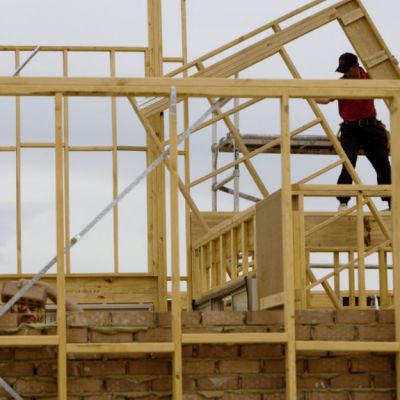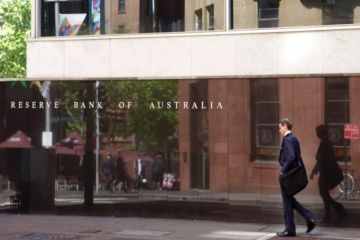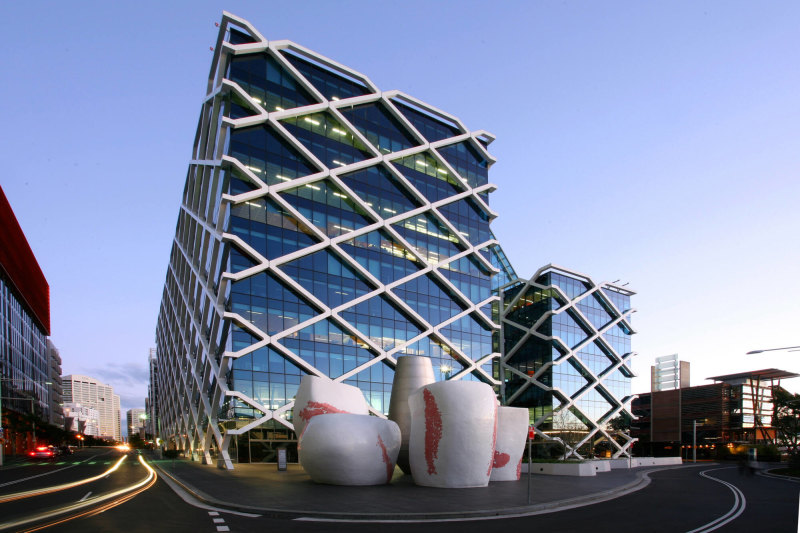Gungahlin region leads house price growth across Canberra
Three Gungahlin suburbs have led Canberra’s house price growth over the past five years, Domain Group data shows.
Harrison has led the charge with house prices more than doubling, surging a staggering 104.6 per cent to $628,000 as of December 2016.
In Crace and Bonner prices have grown 66.7 per cent and 62.5 per cent respectively, rounding out the top three.
Crace’s median is $690,000, while Bonner’s median is $585,000.
The results show the biggest sales don’t always translate to the biggest growth, with two of the three suburbs recording figures below the ACT’s median house price of $684,395, as of December.
Since then, Canberra’s median has surged past the $700,000 mark.
ACT house prices have jumped 19.6 per cent over the past five years, from the beginning of 2012 to the end of 2016.
During this period the nation’s capital has experienced falling interest rates and bounced back from public sector shake-ups.
Allhomes data scientist Nicola Powell said Canberra’s residential property market had “weathered that storm and come through”.
“Jobs are more secure, interest rates are so low and it really has been in catch-up mode,” she said.
All but two ACT suburbs recorded house price growth over the five-year period, with small drops in Bonython (-0.7 per cent) and Florey (1.2 per cent).
Florey’s suburb record has been broken twice this year.
In Yarralumla house prices have risen 42.1 per cent to a median of $1,442,500; the territory’s fourth-biggest result.
Weston recorded the fifth-highest growth rate with house prices increasing 32.1 per cent to $700,000.
The highest growth suburbs largely fall in central Canberra, Weston Creek and parts of Gungahlin.
The data includes suburbs with a minimum 30 sales over the five years.
Domain Group chief economist Andrew Wilson said the top three Gungahlin suburbs for house price growth were still relatively affordable.
“I think that reflects the value as Gungahlin’s development progresses over the period,” he said.
Dr Powell said the rise of Gungahlin house prices aligns with the latest ABS figures, which place Harrison, Crace and Bonner in the top 10 for population growth.
“[The data] reflects the buying habits of a lot of first home buyers and upsizers,” she said.
“They quite like purchasing a new home and these three suburbs have seen a lot of development occurring.”

Pete and Amber Nichols with their two children Charlie, 3, and Olive, 1, at home in Harrison. Photo: Rohan Thomson
Amber and Pete Nichols bought in Harrison a year ago and while they welcomed the news of price growth in the suburb, it wasn’t the main reason they chose to buy in the area.
“We’d been living in Gungahlin and we absolutely loved the area,” Ms Nichols said. “We didn’t want to move outside Gungahlin, but we wanted to be close to the city.”
Ms Nichols said it was the perfect place to raise Charlie, 3, and Olive, 18 months.
“We loved the Gungahlin community; it’s a community of families and it’s a multicultural community,” she said.
ACT unit prices have fallen 4.4 per cent over the past five years however, prices have grown substantially in a number of suburbs.
The city has lead the way with prices jumping 22.1 to a median price of $570,900.
Unit prices in Nicholls have grown by 13.7 per cent to a $520,000-median, while prices in Watson have increased 11.6 percent to $410,000.
Half of the 28 suburbs analysed recorded a drop in prices over the five-year period.
Dr Powell said some of the suburbs’ unit prices have been buoyed by townhouse growth.
“Townhouses are that affordable alternative for entry-level buyers,” she said. “Nicholls has been driven forward by townhouse growth.”
Dr Wilson said the city’s apartment price growth reflected the demand for higher density living in inner city areas.
“It’s the old proximity argument, that people pay more for an centralised downtown environment,” he said.
He said the jump in median price seemed to reflect a bigger price mix and more diverse buying habits.
We recommend
States
Capital Cities
Capital Cities - Rentals
Popular Areas
Allhomes
More










